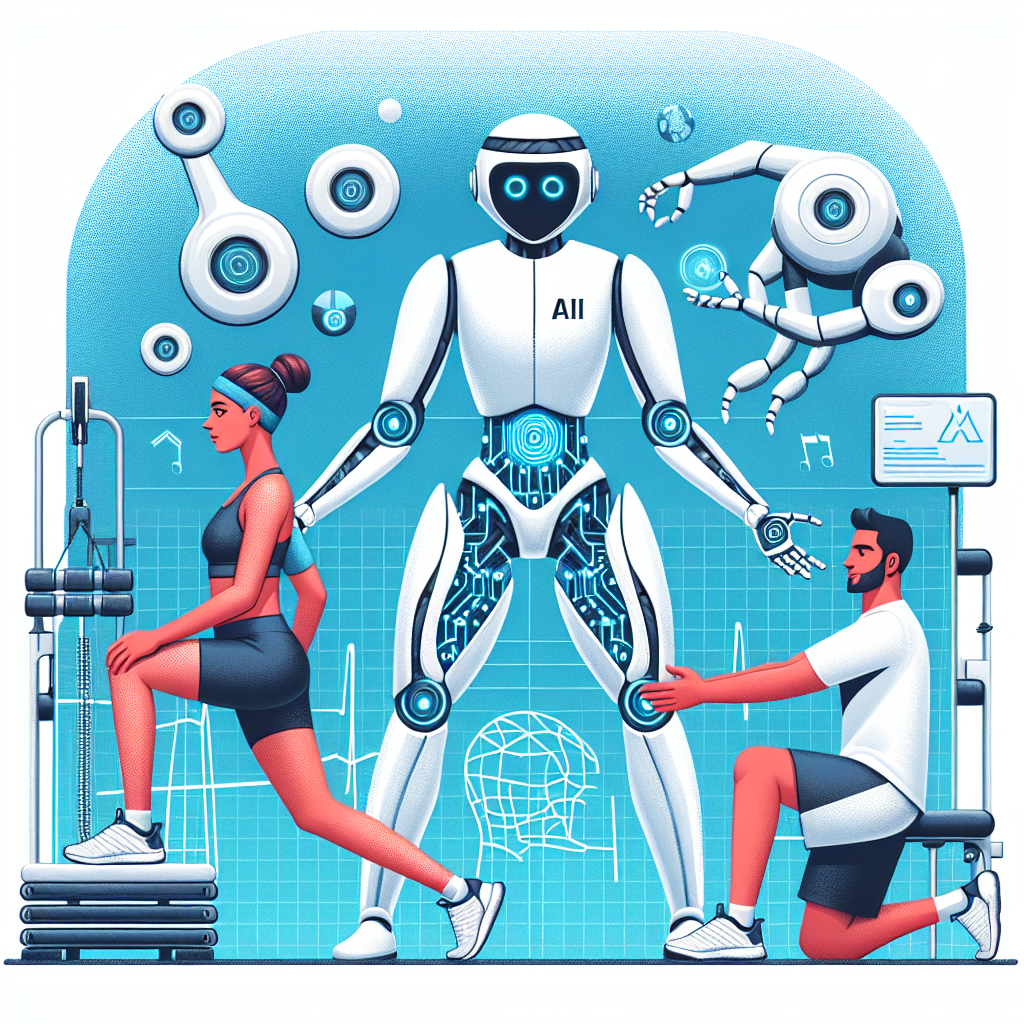AI-Powered Sports Injury Rehabilitation: The Future of Recovery
Sports injuries are unfortunately a common occurrence for athletes of all levels. Whether it’s a sprained ankle, torn ligament, or muscle strain, injuries can sideline athletes for weeks or even months, impacting their performance and potentially ending their careers. However, with advancements in technology, particularly in the field of artificial intelligence (AI), sports injury rehabilitation is undergoing a revolution that is changing the way athletes recover and return to their sport.
AI-powered sports injury rehabilitation utilizes machine learning algorithms and data analysis to create personalized rehabilitation plans for athletes based on their injury type, severity, and individual biomechanics. By combining the power of AI with traditional rehabilitation techniques, athletes are able to recover faster, reduce the risk of re-injury, and improve their overall performance.
How does AI-powered sports injury rehabilitation work?
AI-powered sports injury rehabilitation begins with collecting data on the athlete’s injury through various sources such as medical records, imaging scans, and wearable devices. This data is then analyzed by AI algorithms to create a personalized rehabilitation plan that takes into account the athlete’s specific needs and goals.
For example, if an athlete has a torn ACL, the AI algorithm may recommend a combination of physical therapy exercises, strength training, and rest periods to promote healing and strengthen the surrounding muscles. The algorithm can also track the athlete’s progress over time, adjusting the rehabilitation plan as needed to ensure optimal recovery.
One of the key benefits of AI-powered sports injury rehabilitation is its ability to provide real-time feedback to athletes during their rehabilitation process. By using wearable devices and sensors, AI algorithms can monitor the athlete’s movement patterns, muscle activation, and biomechanics to ensure they are performing exercises correctly and safely. This feedback not only helps prevent re-injury but also allows athletes to track their progress and stay motivated throughout the recovery process.
In addition to personalized rehabilitation plans and real-time feedback, AI-powered sports injury rehabilitation can also help athletes by predicting potential injuries before they occur. By analyzing data on an athlete’s training load, biomechanics, and injury history, AI algorithms can identify risk factors that may lead to future injuries and recommend strategies to prevent them. This proactive approach to injury prevention can help athletes stay healthy and perform at their best for longer periods of time.
FAQs:
Q: How accurate is AI-powered sports injury rehabilitation in predicting and preventing injuries?
A: AI-powered sports injury rehabilitation has shown promising results in predicting and preventing injuries. By analyzing data on athletes’ training load, biomechanics, and injury history, AI algorithms can identify patterns and risk factors that may lead to future injuries. While no prediction model is 100% accurate, AI-powered systems have been shown to significantly reduce the risk of injuries and improve athlete performance.
Q: Can AI-powered sports injury rehabilitation replace traditional rehabilitation techniques?
A: AI-powered sports injury rehabilitation is not meant to replace traditional rehabilitation techniques but rather complement them. While AI algorithms can create personalized rehabilitation plans and provide real-time feedback to athletes, human therapists and trainers play a crucial role in overseeing the rehabilitation process, making adjustments as needed, and providing hands-on support to athletes.
Q: Is AI-powered sports injury rehabilitation only for professional athletes?
A: AI-powered sports injury rehabilitation can benefit athletes of all levels, from recreational to professional. While professional athletes may have access to more advanced technologies and resources, AI-powered systems can be adapted for use in sports clinics, gyms, and even at home. By making rehabilitation more accessible and personalized, AI-powered systems can help athletes of all levels recover faster and perform better.
Q: How can athletes access AI-powered sports injury rehabilitation?
A: Athletes can access AI-powered sports injury rehabilitation through sports clinics, physical therapy practices, and specialized training facilities that offer AI-powered rehabilitation services. In some cases, athletes may also be able to use wearable devices and mobile apps that incorporate AI algorithms to track their progress and receive personalized feedback on their rehabilitation.
In conclusion, AI-powered sports injury rehabilitation is revolutionizing the way athletes recover from injuries and return to their sport. By leveraging the power of AI algorithms, athletes can benefit from personalized rehabilitation plans, real-time feedback, and injury prevention strategies that enhance their recovery process and improve their performance. As this technology continues to evolve, the future of sports injury rehabilitation looks promising, offering athletes new tools and resources to stay healthy, strong, and competitive.

